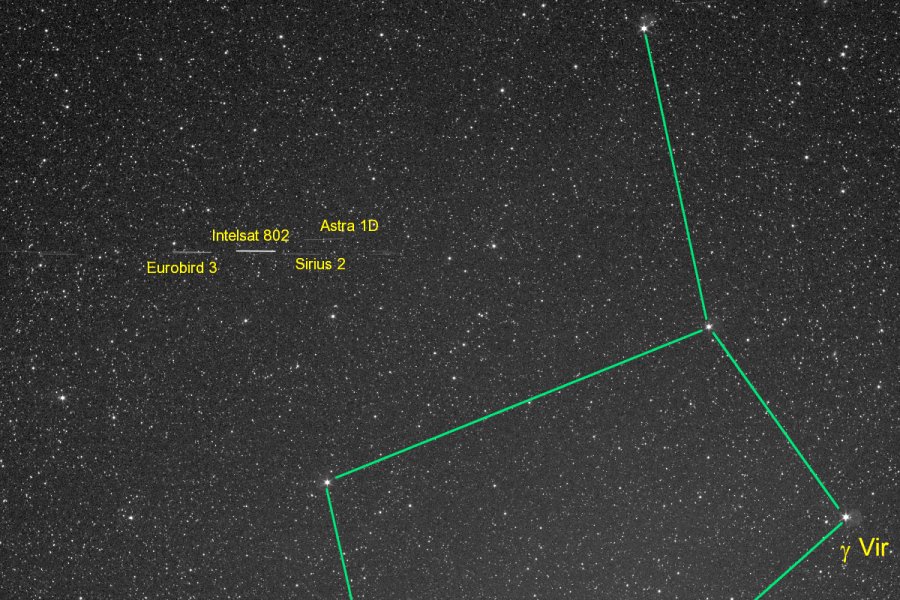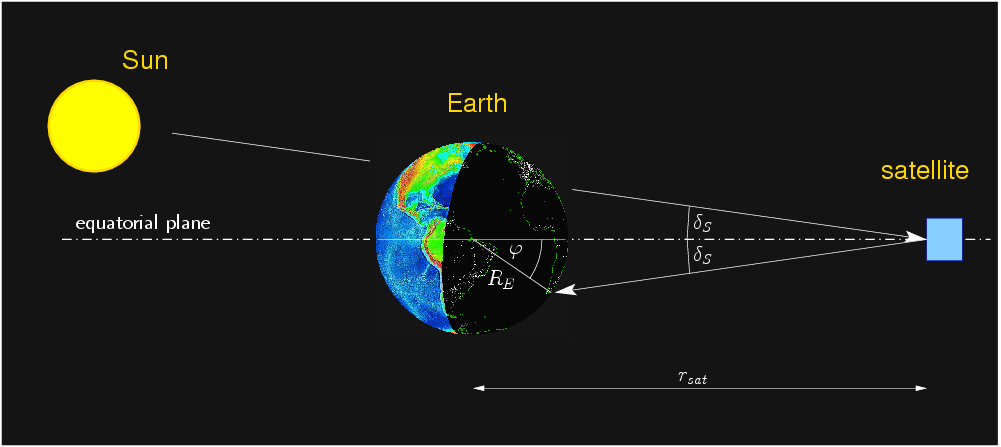Bright Geostationary Satellites

|
Geostationary satellites orbit the earth in 24 hours and hence appear to be stationary objects for earth-based observers. In this 4 min guided wide-angle photograph, they appear as 1° long trails. Click here to watch a time-lapse sequence of four 4-min exposures. The satellites can be seen to brighten and dim as the sunlight is reflected off various parts of their structure. Normally, these satellites are fainter than mag. 11. However, when sunlight is reflected off their surface towards the observer, they can brighten up to the point where they become visible to the naked eye. As shown below, this happens twice a year around the equinoxes.
For an observer at latitude φ the optimum declination of the sun &deltaS can be calculated according to where RE is earth's radius (6378 km) and rsat is the orbital radius of the satellite (42164 km). Thus, the best time to observe geostationary satellites is a few weeks before the spring equinox or after the fall equinox. (This also applies to southern hemisphere observers if one takes into account that their spring equinox is in September, and their fall equinox in March.) |
| Camera | : | STL-11000 |
| Lens | : | Minolta 1.4/50 mm @ f/4.0 |
| Fiter | : | Astronomik G |
| Site | : | Koornlandskloof Guest Farm, Northern Cape Province, South Africa |
| Date | : | 5 April 2008 |
| Exposure | : | 4x4 min |
| Processing | : | Bias, dark frame, flat field correction: IRAF, post-processing: Gimp, geostationary satellite finder: XEphem |

 Back to image gallery
Back to image gallery
